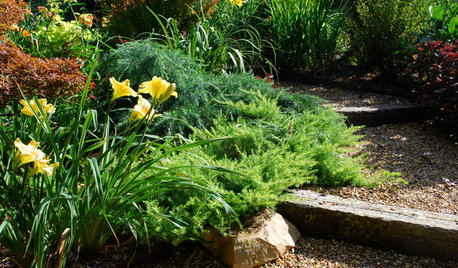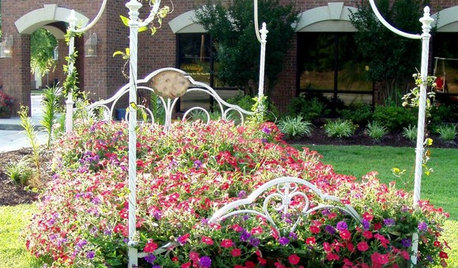Till or not to Till in new beds or plantings?
the_virginian
15 years ago
Related Stories

GARDENING GUIDESGreat Design Plant: Juniperus Conferta ‘Golden Pacific’
‘Golden Pacific’ shore juniper shines in sun or partial shade
Full Story
INSPIRING GARDENSNative Plants Bring 10 Southern California Front-Yard Gardens to Life
Rare plants, rain gardens and wildlife habitats are just a few of the features showcased on the 2016 Theodore Payne Native Plant Garden Tour
Full Story
EDIBLE GARDENSGarden BFFs? Why Your Vegetables Are Begging for Companion Plants
Foster friendships among plants for protection from pests, pollination support and color camaraderie
Full Story
GARDENING FOR BUTTERFLIES3 Ways Native Plants Make Gardening So Much Better
You probably know about the lower maintenance. But native plants' other benefits go far beyond a little less watering and weeding
Full Story
GARDENING GUIDESGreat Garden Combo: 3 Wonderful Plants for a Deer-Resistant Screen
Protect your privacy and keep deer at bay with a planting trio that turns a problem garden area into a highlight
Full Story
FALL GARDENINGWhy Fall Is the Best Time for Planting
Spring is overrated for planting. Starting plants in autumn has advantages for both garden and gardener
Full Story
NATIVE PLANTS5 Ways to Keep Your Native Plant Garden Looking Good All Year
It’s all about planning ahead, using sustainable practices and accepting plants as living organisms
Full Story
CONTAINER GARDENSYes, You Can Grow a Plant In That
You can upcycle your old typewriter, paint cans, tires and many more things into places for your plants
Full Story
GARDENING GUIDES6 Plants That Beat Butterfly Bush for the Wildlife Draw
It's invasive, a nonnative and a poor insect magnet. Check out these better alternatives to butterfly bush in the garden
Full Story
CONTAINER GARDENSSolve Your Garden Border Dilemmas With Planted Pots
Set your containers free from the patio — placed among plantings in the ground, they fill unsightly gaps, let you experiment and more
Full StoryMore Discussions








kqcrna
digdirt2
Related Professionals
Fitchburg Landscape Architects & Landscape Designers · West Chester Landscape Architects & Landscape Designers · Roxbury Crossing Landscape Architects & Landscape Designers · Bowie Landscape Contractors · Danvers Landscape Contractors · Galt Landscape Contractors · Nutley Landscape Contractors · Wallingford Landscape Contractors · Cave Spring Decks, Patios & Outdoor Enclosures · Bloomington Decks, Patios & Outdoor Enclosures · Del Aire Decks, Patios & Outdoor Enclosures · Garden City Decks, Patios & Outdoor Enclosures · Leander Decks, Patios & Outdoor Enclosures · Parlier Decks, Patios & Outdoor Enclosures · Randallstown Decks, Patios & Outdoor Enclosuresgardengal48 (PNW Z8/9)
Kimmsr
the_virginianOriginal Author
annpat
lisatx04
Kimmsr
coffeehaus
lisatx04
rootdoctor
Kimmsr